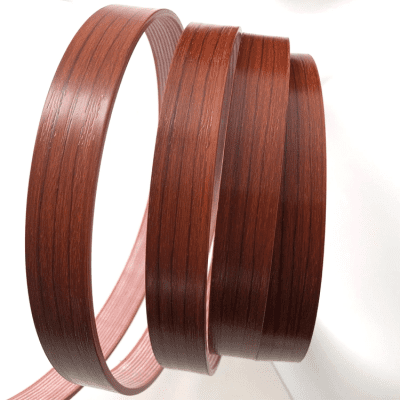
Painting PVC edge banding can be challenging because PVC (Polyvinyl Chloride) is a plastic material with a smooth, non-porous surface, which can make it resistant to traditional paint adhesion. However, if you want to change the color of PVC edge banding or achieve a specific finish, there are some steps you can take to paint it effectively. Here’s a guide on how to paint PVC edge banding:
Materials and Tools Needed:
- PVC Edge Banding:
- Ensure the PVC edge banding is clean and free of any dust or debris.
- Fine Grit Sandpaper (220-400 grit):
- Lightly sand the surface of the PVC edge banding to create a textured surface that improves paint adhesion.
- Primer for Plastic:
- Use a plastic primer specifically designed for PVC or other plastics. This helps the paint adhere better to the surface.
- High-Quality Paint for Plastic:
- Choose a high-quality paint specifically formulated for plastic surfaces. Acrylic or enamel paints designed for plastics are suitable options.
- Paintbrushes or Spray Paint:
- Depending on your preference and the size of the project, you can use paintbrushes or spray paint.
- Painter’s Tape:
- Use painter’s tape to mask off any areas you don’t want to paint.

- Use painter’s tape to mask off any areas you don’t want to paint.
Steps:
- Clean the PVC Edge Banding:
- Ensure the PVC edge banding is clean and free of any dust, grease, or contaminants. Wipe it down with a mild detergent and water solution, and let it dry completely.
- Sand the Surface:
- Lightly sand the surface of the PVC edge banding using fine grit sandpaper (220-400 grit). This creates a textured surface that improves the adhesion of the primer and paint. Be cautious not to sand too aggressively, as you don’t want to compromise the integrity of the edge banding.
- Apply Plastic Primer:
- Apply a plastic primer specifically designed for PVC or other plastics. Follow the manufacturer’s instructions regarding application and drying times. The primer helps the paint adhere better to the plastic surface.
- Paint the PVC Edge Banding:
- Once the primer is dry, apply the paint using either paintbrushes or spray paint. Follow the manufacturer’s recommendations for the specific paint you are using. Apply multiple thin coats, allowing each coat to dry completely before applying the next.
- Allow Drying Time:
- Allow the painted PVC edge banding to dry thoroughly. This may take several hours or longer, depending on the type of paint used.
- Optional: Apply a Clear Sealer (Optional):
- To protect the painted surface, you can apply a clear sealer designed for plastics. This step is optional but can enhance the durability and longevity of the paint.
- Remove Painter’s Tape (if used):
- If you used painter’s tape to mask off areas, carefully remove it once the paint is dry to the touch.
Keep in mind that painting PVC can be less durable than the original material, and the painted finish may be more prone to scratching or chipping. Additionally, test the painting process on a small, inconspicuous area or a scrap piece of PVC edge banding to ensure compatibility and adhesion before applying it to the entire project.

